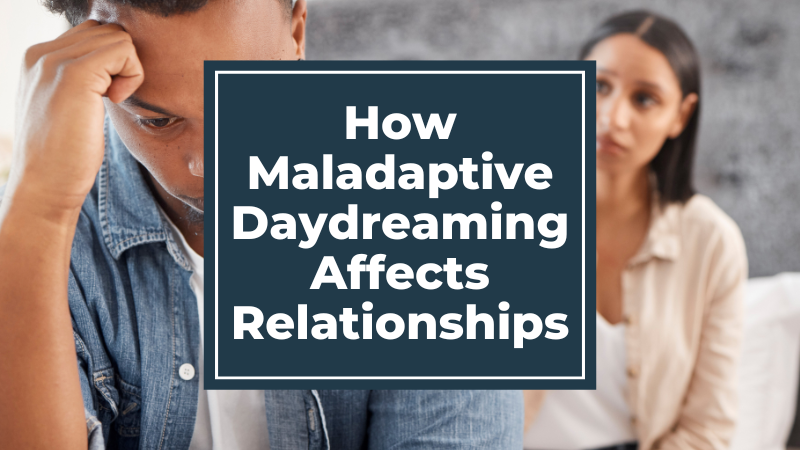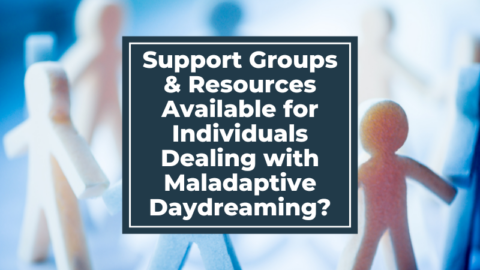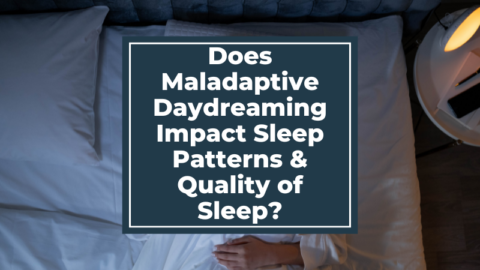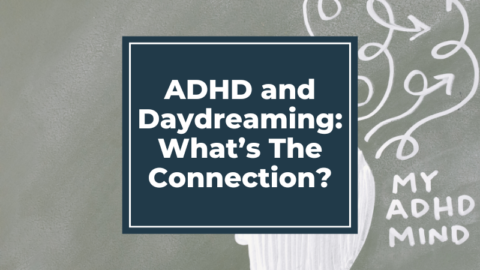Maladaptive daydreaming, a phenomenon characterized by excessive and immersive daydreaming, goes beyond the realm of ordinary imagination. While daydreaming is a common and often harmless activity, maladaptive daydreaming can have significant effects on an individual’s relationships, work performance, and overall functioning. As individuals become consumed by elaborate daydreams, the lines between fantasy and reality blur, leading to a range of challenges that can disrupt various aspects of life.
In this article, we will explore how maladaptive daydreaming affects relationships. We will delve into the complexities of this condition and shed light on the consequences individuals may face as they navigate their daydream-filled world.
Whether you’re someone experiencing maladaptive daydreaming or seeking to understand its impact on a loved one, this exploration will provide valuable insights into the challenges faced and the potential consequences that arise from this excessive form of daydreaming. By gaining a deeper understanding, we can foster empathy, support, and develop strategies to navigate the effects of maladaptive daydreaming.
Are People Who Maladaptive Daydream Unhappy With Their Real-Life Relationships?
People who experience maladaptive daydreaming may have varied experiences with their real-life relationships. While it’s not a universal characteristic, some individuals with maladaptive daydreaming may struggle with dissatisfaction or unhappiness in their real-life relationships. This can occur due to several reasons:
- Disconnection: Excessive daydreaming can create a sense of disconnection from reality, including real-life relationships. The immersive nature of daydreaming can lead to a diminished focus on interpersonal connections and a preference for the world of fantasies and imagined relationships.
- Comparison: Daydreams often involve idealized scenarios and relationships that may differ significantly from real-life relationships. Comparisons between the idealized daydream relationships and the complexities of real-life connections can contribute to feelings of dissatisfaction or unhappiness.
- Time and Attention: Excessive daydreaming can consume significant amounts of time and mental energy. This can result in individuals investing less time and attention in their real-life relationships, leading to feelings of neglect or distance from their loved ones.
- Unrealistic Expectations: The vivid and perfect nature of daydreams can create unrealistic expectations for real-life relationships. When real-life relationships fail to meet these lofty ideals, individuals may experience disappointment or frustration.
However, it is essential to note that not all individuals with maladaptive daydreaming experience dissatisfaction in their real-life relationships. Some individuals can maintain fulfilling and meaningful connections while managing their daydreaming tendencies. Additionally, seeking professional help, developing coping strategies, and fostering open communication within relationships can contribute to a more balanced and satisfying experience for individuals with maladaptive daydreaming.
It is crucial to approach the topic with empathy and understanding, as the experiences and impacts of maladaptive daydreaming on real-life relationships can vary from person to person.
Are There Themes or Elements of a Maladaptive Daydreamer’s Dreams That Might Suggest They Are Unhappy with Their Relationships?
In the context of maladaptive daydreaming, the themes or elements present in daydreams can vary widely among individuals. While it is not always the case, certain themes or elements in daydreams may suggest underlying unhappiness or dissatisfaction with real-life relationships for some individuals. Here are a few examples:
- Idealized Relationships: Daydreams may often feature idealized versions of relationships that differ significantly from real-life dynamics. If the daydreams consistently revolve around perfect or ideal relationships, it could indicate a desire for more fulfillment or satisfaction in real-life connections.
- Escapist Fantasies: Maladaptive daydreaming can serve as an escape from real-life challenges or difficulties in relationships. If the daydreams predominantly involve escaping into imagined scenarios to avoid real-life relationship problems, it may suggest dissatisfaction or unhappiness within those relationships.
- Intense Emotional Connections: Daydreams characterized by intense emotional connections or longing for deep connections that are absent in real life may indicate a longing for more fulfilling relationships or dissatisfaction with the current level of emotional connection.
- Unrealistic Expectations: If daydreams consistently feature scenarios or interactions that are unrealistic or unattainable in real life, it may suggest a longing for more fulfilling or satisfying relationships that align with these idealized expectations.
- Violence: Both themes of sexual and non-sexual violence frequently appearing in your daydreams may suggest that you feel powerless in your relationships and wish to leave the relationship, gain revenge, or take back the power in your relationship.
It is important to approach the interpretation of daydream themes with caution, as they can be influenced by individual experiences, desires, and fantasies. It is not always a definitive indication of unhappiness with real-life relationships. However, if individuals consistently find themselves daydreaming about idealized relationships or using daydreaming as an escape from relationship problems, it may be worth exploring these patterns further and seeking support to address any underlying issues or concerns.
It’s essential to consider the broader context of an individual’s life and emotions when interpreting daydream themes. Factors such as overall life satisfaction, self-esteem, past experiences, and individual coping mechanisms can influence the content and meaning of daydreams. It’s also important to remember that maladaptive daydreaming is a spectrum, and each person’s experience may differ.
If you or someone you know is concerned about the impact of daydreaming on relationships, seeking professional guidance from a mental health professional, such as a therapist or counselor, can provide a deeper understanding of the individual’s specific situation and help develop strategies for improving relationship satisfaction and overall well-being.
How Does Maladaptive Daydreaming Affect Relationships
Maladaptive daydreaming can have a significant impact on relationships, work, and overall functioning. Here are some ways in which maladaptive daydreaming can affect these areas:
- Relationships: Maladaptive daydreaming can lead to a decreased ability to be present and fully engaged in relationships. Individuals may find themselves preoccupied with daydreams, leading to difficulties in maintaining meaningful connections with others. This preoccupation can cause neglect of social interactions, reduced communication, and emotional disconnection from loved ones.
- Work or School Performance: Excessive daydreaming can interfere with productivity and focus, affecting performance at work or school. Individuals may struggle to stay motivated and meet deadlines due to excessive daydreaming episodes. This can result in decreased efficiency, missed opportunities, and potential negative consequences in academic or professional settings. This can also negatively affect romantic relationships as your partner may feel you are not able to support yourself, them, and/or a family.
- Emotional Well-being: Maladaptive daydreaming can contribute to emotional distress, such as feelings of guilt, shame, or frustration. Individuals may experience a sense of dissatisfaction or disappointment with their real-life experiences compared to their vivid daydreams, leading to a diminished sense of fulfillment and happiness. This emotional dysregulation can impact overall well-being and quality of life, which can bleed over into your relationships.
- Time Management and Daily Functioning: Excessive daydreaming can consume a significant amount of time and disrupt daily routines. Individuals may find it challenging to prioritize relationships and maintain their agreed-upon share of tasks in the relationship. This can lead to resentment between your partner.
- Social Isolation: Excessive daydreaming can lead to social withdrawal and isolation. Individuals may prefer the solace of their daydreams over real-life interactions, leading to a reduced desire to engage in social activities or form new relationships. This isolation can further exacerbate feelings of loneliness and disconnect from the outside world. This can make it hard for you to engage in new relationships as well as maintain current relationships.
- Self-Esteem and Self-Identity: Maladaptive daydreaming can affect an individual’s self-esteem and self-identity. Constantly escaping into daydreams may create a discrepancy between one’s idealized self in daydreams and their real-life self. This mismatch can lead to feelings of inadequacy, low self-worth, and a distorted perception of oneself.
- Emotional Regulation: Maladaptive daydreaming can impact emotional regulation. Individuals may rely on daydreaming as a coping mechanism to escape or avoid difficult emotions or situations. However, this can prevent the development of healthy emotional regulation skills, leading to challenges in managing emotions effectively in real-life situations.
- Personal Fulfillment: Excessive daydreaming can create a sense of dissatisfaction with real-life experiences and hinder personal growth and fulfillment. Spending significant time and energy in daydreams may prevent individuals from pursuing meaningful goals, engaging in hobbies or activities, and fully embracing real-life experiences that could contribute to personal satisfaction and fulfillment. These experiences are also crucial to growing and maintaining your relationships.
- Interpersonal Difficulties: Excessive daydreaming can lead to challenges in interpersonal interactions. Individuals may struggle to actively listen, engage in meaningful conversations, or participate in social activities due to their preoccupation with daydreams. They may be irritable or angry when their daydreams are interrupted or when they are prevented from being able to daydream. This can result in strained relationships, miscommunication, and feelings of disconnection from others.
- Impaired Decision-Making: Excessive daydreaming can impact decision-making abilities. Individuals may struggle to make clear and rational choices as their thoughts are often consumed by daydreams. This can result in indecisiveness, second-guessing, and a lack of focus on practical considerations.
- Escalation of Symptoms: If maladaptive daydreaming remains unmanaged or untreated, symptoms can intensify over time. The excessive daydreaming episodes may become more frequent, prolonged, or immersive, further affecting relationships, work performance, and overall functioning.
- Impact on Self-Care: Excessive daydreaming can interfere with self-care routines and habits. Individuals may neglect important aspects of self-care, such as maintaining a healthy diet, exercising regularly, or attending to personal hygiene, as their attention is primarily focused on daydreaming. This can result in physical and mental health challenges over time.
- Financial Consequences: Maladaptive daydreaming can have financial implications. Excessive daydreaming can lead to overspending or impulsive purchasing decisions, especially if daydreams involve material possessions or luxurious lifestyles. This can result in financial strain, debt, and difficulties in maintaining financial stability. Financial difficulties are a huge factor in many breakups and divorces in America.
It’s important to note that the impact of maladaptive daydreaming can vary among individuals. Some may experience more severe impairments in certain areas, while others may have milder disruptions. Seeking professional help, such as therapy or counseling, can provide strategies and support in managing maladaptive daydreaming and its impact on relationships, work, and overall functioning. Developing coping mechanisms, practicing mindfulness, and setting realistic goals can also contribute to better overall functioning and improved well-being.
In Summary: Maladaptive Daydreaming Can Severely Impact Relationships, But There Is Hope
Maladaptive daydreaming, with its immersive and excessive nature, can significantly impact relationships, work, and overall functioning. Throughout this exploration, we have seen how individuals caught in the grip of maladaptive daydreaming may experience strained relationships, decreased productivity at work, and a diminished sense of overall well-being. The consequences of this condition can range from emotional and social difficulties to challenges with time management and self-care.
However, it is important to remember that there is hope and support available for those affected by maladaptive daydreaming. Recognizing the impact and seeking professional guidance can be the first steps toward understanding and managing this condition. Strategies such as mindfulness, therapy, and developing healthier coping mechanisms can empower individuals to regain control over their daydreaming and navigate their real-life experiences more effectively.
By fostering understanding, empathy, and awareness, we can create a supportive environment where individuals affected by maladaptive daydreaming can find solace and seek the assistance they need. Together, we can advocate for increased recognition and resources for this often-overlooked condition, enabling individuals to reclaim their lives and thrive beyond the confines of excessive daydreaming.
Remember, you are not alone. Reach out, share your experiences, and embrace the journey toward finding a healthier balance between the richness of your imagination and the fulfillment of real-life connections and achievements.
Join the Maladaptive Daydreaming Forum today to connect with other maladaptive daydreamers.









